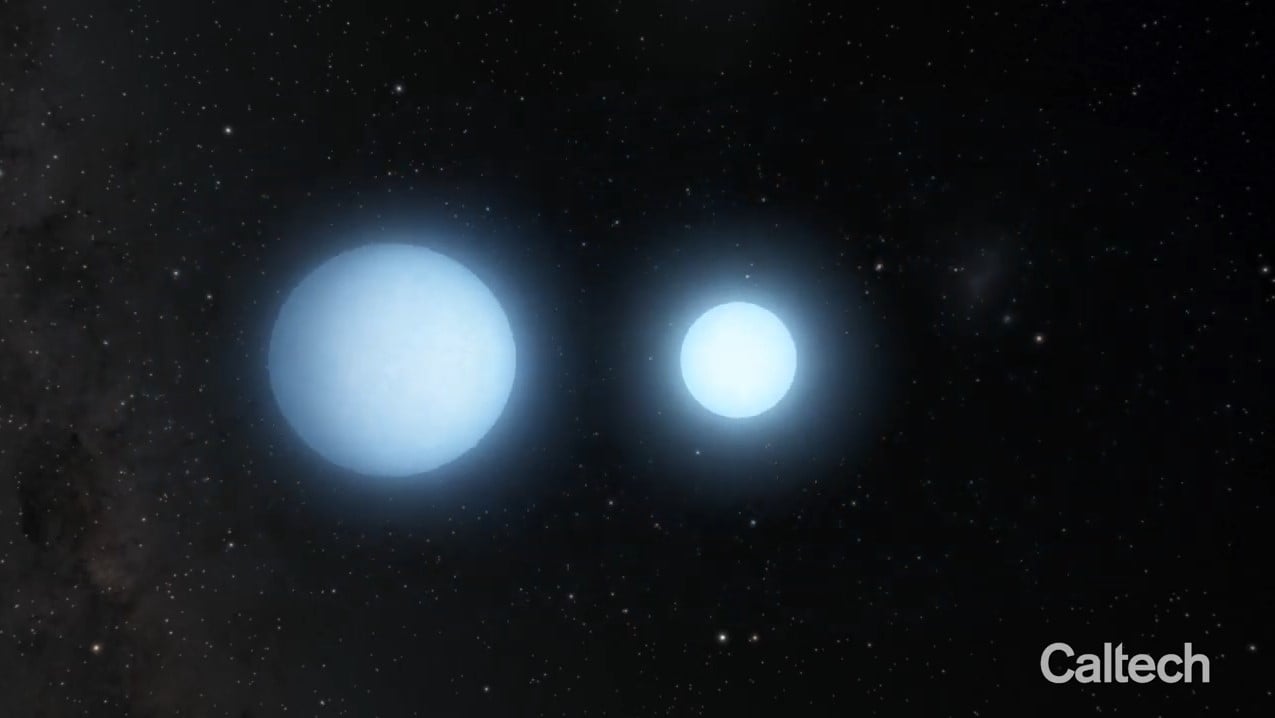Using a historical telescope, the Kitt Peak 2.1-meter telescope, a group of researchers discovered two dead stars that are dancing and whirling in a death spiral. The stars eclipse each other every seven minutes, which sheds light on how chaotic this system is. Additionally, these observations may offer more insights into gravitational waves.
A group of researchers from the California Institute of Technology (Caltech) collaborated with the Zwicky Transient Facility (ZTF) and combined months of ZTF data before they noticed a strange star pattern which was created by two white dwarfs. White dwarfs are the remnants of dead stars, or stars that have run out of fuel.
Scientists focused on the two stars known as ZTF J1539+5027 which orbit each other while each measure roughly the size of Earth, with one being smaller and relatively brighter compared to the other. The star system blinks when the dimmer star passes in front of the brighter star, eclipsing it.
“As the dimmer star passes in front of the brighter one, it blocks most of the light, resulting in the seven-minute blinking pattern we see in the ZTF data,” Caltech graduate student Kevin Burdge, lead author of the paper reporting the discovery, published in the journal Nature said in a statement.
Scientists continue theorizing about what could happen when the two star systems like this would merge, and what would remain after two dead stars locked in a death spiral would consume each other. According to Burdge, the stars emit gravitational waves which would cause them to merge in about 200,000 years.
Burdge also told Space.com that in the next 100,000 years, the smaller star could dump matter onto the bigger star which could result in their orbits becoming stabilized, and breaking the death spiral open. However, because J1539 has a tighter orbit, its orbit period is expected to become shorter after only a few years. The team derived these results using rules from general relativity of shrinking orbit. They compared their results to archived data acquired from research over the past ten years.
One of the two dead stars, J1539 is also significant to science because it’s a rare source of gravitational waves – ripples of space time that unlock many secrets about the universe as we know it. The European Space Agency in collaboration with NASA plans a mission known as LISA (Laser Interferometer Space Antenna) which will launch in 2034 and offer more information on the secrets about gravitational waves and dark matter.
“Within a week of LISA turning on, it should pick up the gravitational waves from this system. LISA will find tens of thousands of binary systems in our galaxy like this one, but so far we only know of a few. And this binary-star system is one of the best characterized yet due to its eclipsing nature,” co-author Tom Prince, the Ira S. Bowen Professor of Physics at Caltech and a senior research scientist at JPL, told Space.com.





